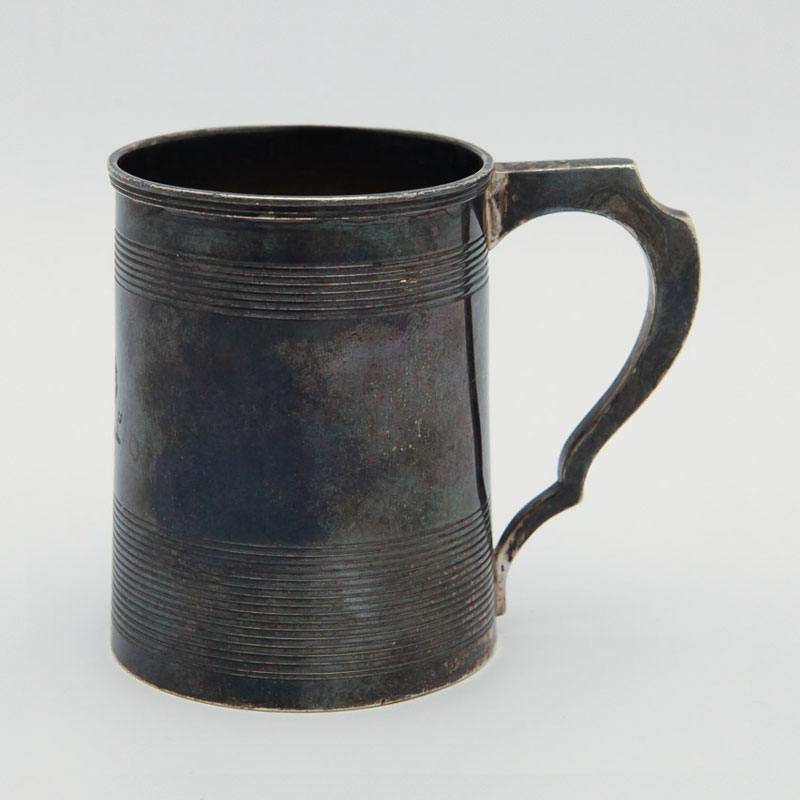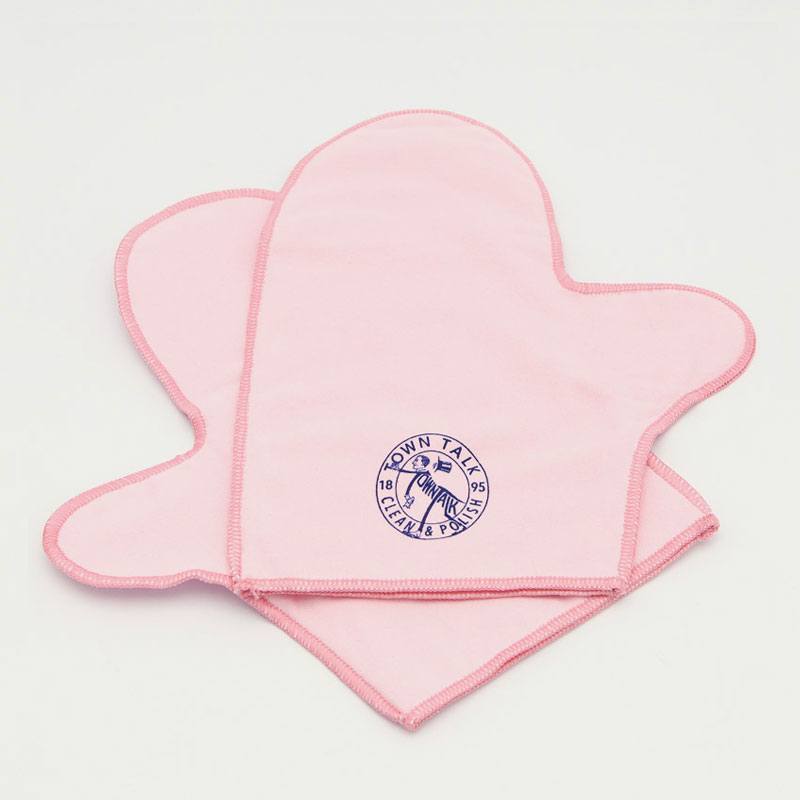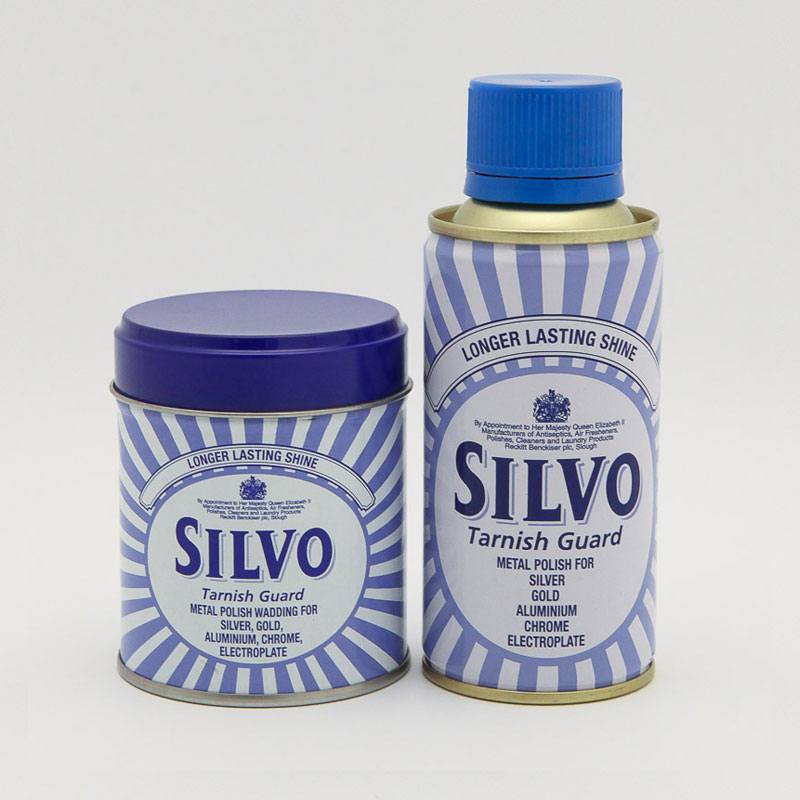CLEANING SILVER
Over time, silver and silver plated items tarnish. Firstly they develop a yellow tinge. Then, slowly they darken and eventually, if left for a very long period without being polished, they can actually turn completely black. Some people like the look of silver in a tarnished condition and in fact some museums deliberately let their silver tarnish until completely black. However, most people prefer the elegant, soft lustre of hand polished silver.
Below we will explain some of the different ways that silver can be cleaned and cared for, but first we will explain why it is that silver tarnishes in the first place.

MOST PEOPLE KNOW THAT SILVER TARNISHES
BUT WHAT IS IT THAT IS ACTUALLY HAPPENING?
Silver reacts readily with two different elements that are found in the air we breath; Sulphur and Oxygen. When we talk about silver tarnishing, we are talking about the reaction with sulphur. This is the fastest and most obvious of the two reactions. The silver on the surface of the item combines with the sulphur in the air to form silver sulphide. At first, a thin layer of silver sulphide appears yellow but as the layer thickens the colour darkens to a very dark brown, verging on black.
Silver also reacts with oxygen and like the reaction with sulphur, this also effects the colour, although somewhat more subtly. As silver oxidises it goes a darker, bluer colour. However, this reaction happens very slowly and is generally only visible on old silver items. The deep dark colour of old oxidised silver, coupled with the thousands of tiny scratches that silver collects in use combine to form the item's patina. A good patina is something that silver collectors look for when they examine old silver items.
So, we have two reactions, one with sulphur, one with oxygen. When we clean silver we want to undo the effects of the reaction with sulphur but keep the effects of the reaction with oxygen. This is why we use a special type of cleaning solution that is made up of two different types of cleaning solution.

THE GOOD AND THE BAD OF POLISHING
Sadly, old silver polishes worked like sandpaper rubbing away the top surface of the item, removing both the silver sulphide and the patina. The polishes would be made up by the butler and would frequently contain such frightening ingredients as broken egg shells. For this reason, the engraved and chased decoration of much old silver is badly worn. When silver is in this condition, it is called 'tired' and a collector would want to avoid buying items that are too tired, whilst understanding that some signs of wear are inevitable in old pieces.
Fortunately, modern silver polishes work chemically rather than abrasively. They react with the silver sulphide, releasing the sulphur, and returning the silver to its natural colour. This is why, when cleaning silver which is very tarnished, an eggy smell is produced. The process is effectively non-destructive and if done in the right way, it is very easy to keep your silver in pristine condition indefinitely.
There are a few ways in which the tarnishing process can be slowed down significantly.
Consider these simple tricks...
As explained above, silver tarnishes when it comes into contact with sulphur in the air. If we can decrease the amount of sulphur it comes into contact with, we slow the tarnishing process down. For items which are only used on occasion, this can be easily achieved by storing the silver in tarn proof bags. A number of companies make these bags, which are chemically treated to keep the sulphur out. Of course, it is also possible to store the silver in ordinary bags but there is a small danger that the material or dye in the bag might damage the silver.
For items which are permanently on display, it is ideal if they can be shown in a glass cabinet. The reduced air circulation means that much less sulphur comes into contact with the silver. It's also possible to place in the cabinet anti tarnish strips. These absorb sulphur taking it out of the air in the cabinet and stopping the silver from tarnishing.
When silver must be kept in the open, try to avoid keeping it in the kitchen. Cooking releases lots of sulphur into the air and will cause the silver to tarnish particularly quickly.

DAY TO DAY CLEANING
Inevitably, many items will need to be kept out in the open and will require regular polishing. The easiest way to do this is frequent quick cleans with anti-tarnish mitts. These mitts are made of a soft fabric and impregnated with a chemical that removes the sulphur. They are perfect for removing fingerprints and light tarnish. If mitts are used frequently, say once every couple of months, you will never need to use a silver polish.
At I.Franks we use Town Talk's polishing mitts. Town Talk also do a large range of anti-tarnish storage bags.

CLEANING HEAVY TARNISH
When items are not polished for some time, the tarnish will become so heavy that polishing mitts will no longer suffice. Its time to get the silver polish out. The first thing to remember is that we want to avoid scratching the silver. So you must use soft clothes like dusters. Never use an abrasive cloth or sponge. Polishing can also be a messy business, so you might want to wear plastic gloves and lay some newspaper down to work over.
Next, its important to make sure that you select the right polish for the job. At I.Franks, we use liquid polishes to clean silver plate. Liquid polishes are extremely gentle and if used with a soft cloth, will never damage the silver plate. For solid silver items, we use a wadding impregnated with a polish. The material of the wadding is slightly more abrasive than the liquid polish but not so much as to cause any damage. It makes it quicker and easier to clean very tarnished items.
At I.Franks, we use Silvo liquid polish and Silvo wadding. However, there are many different brands of silver polish on the market and all the big name brands are more or less as good as each other. Each polish will come with instructions for use and these should, of course, be followed.